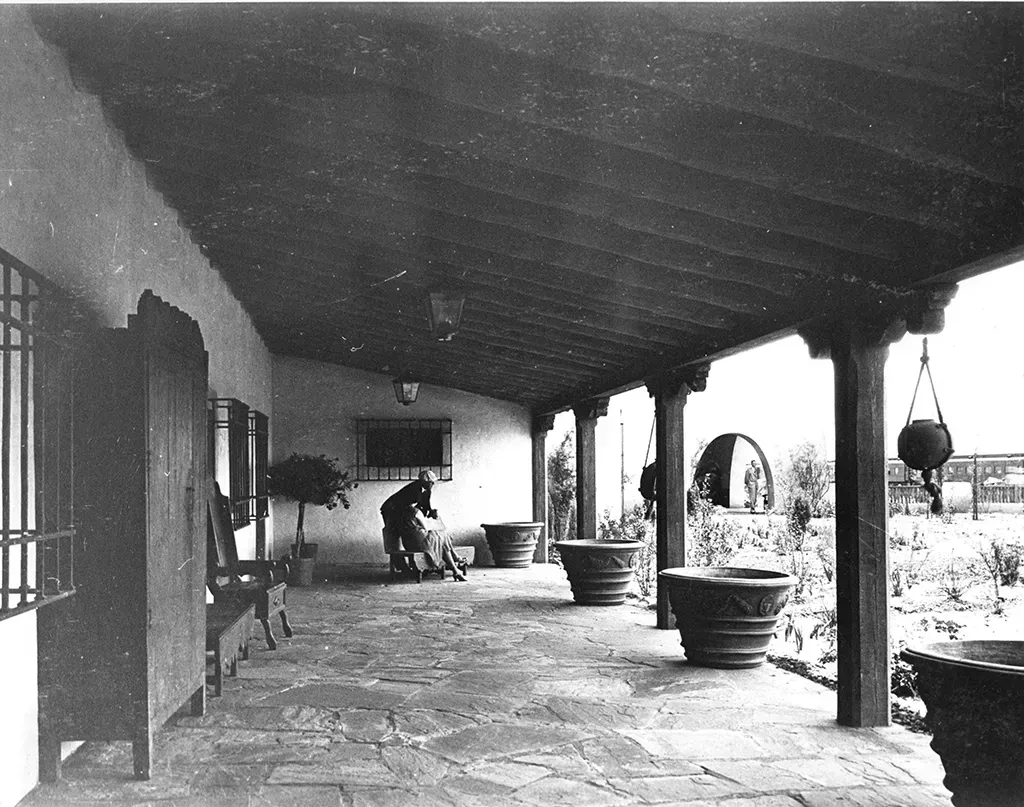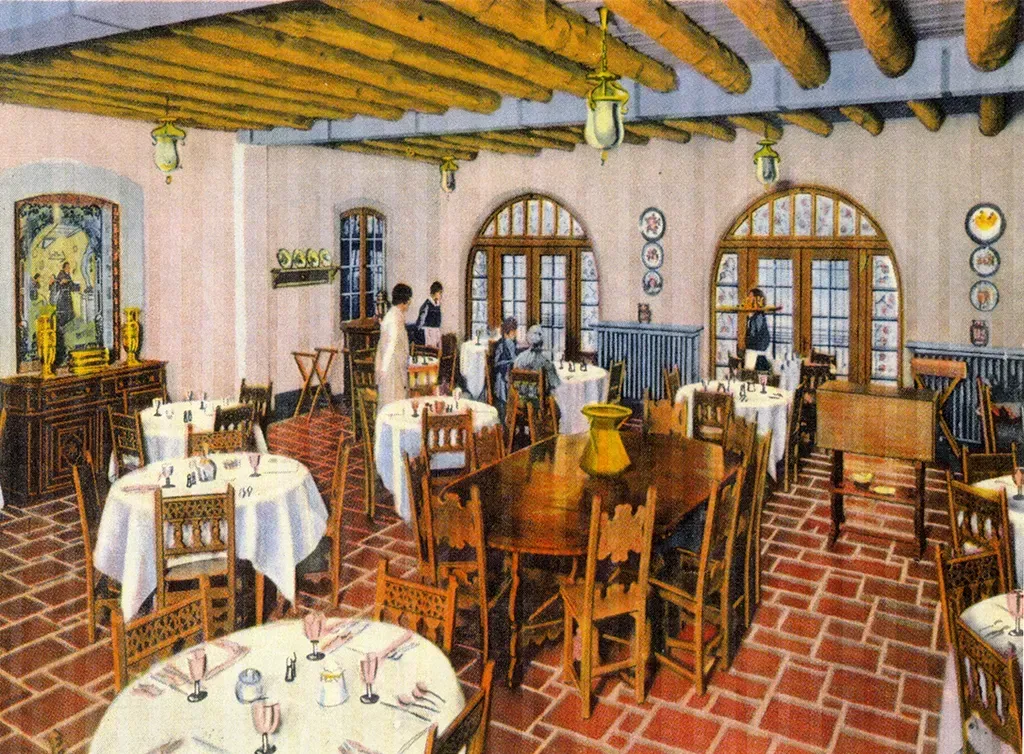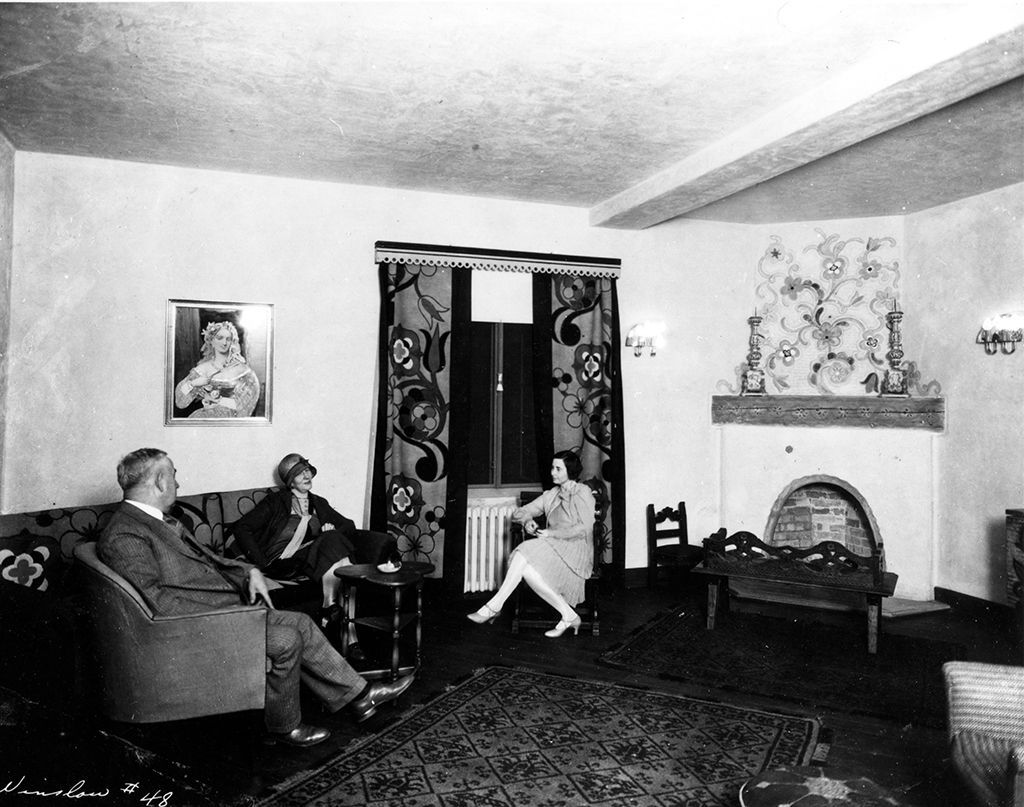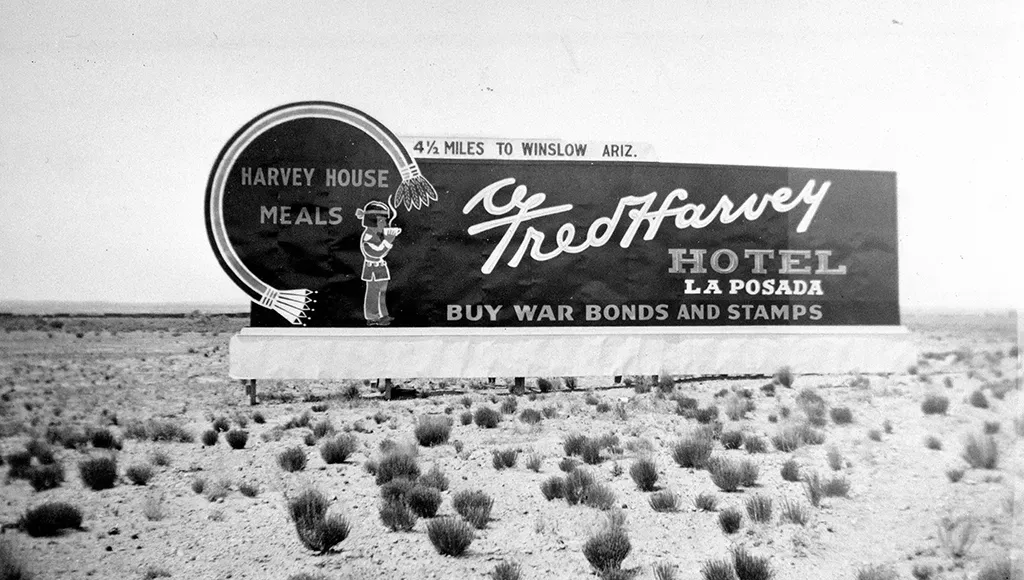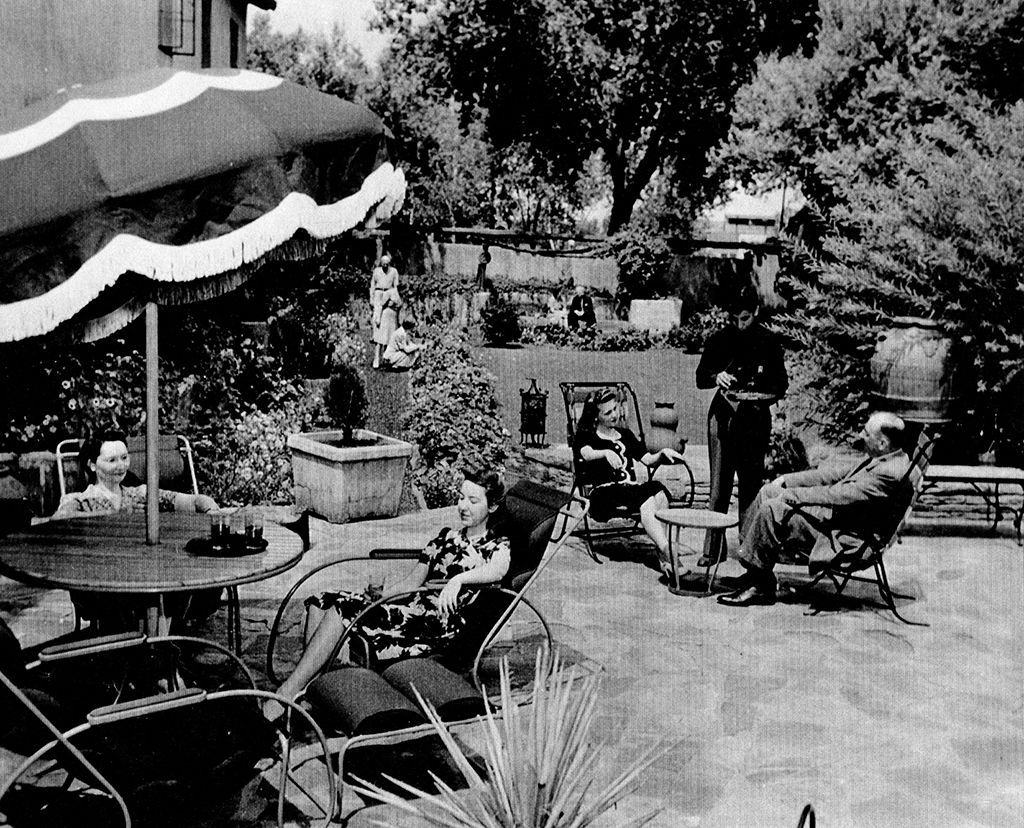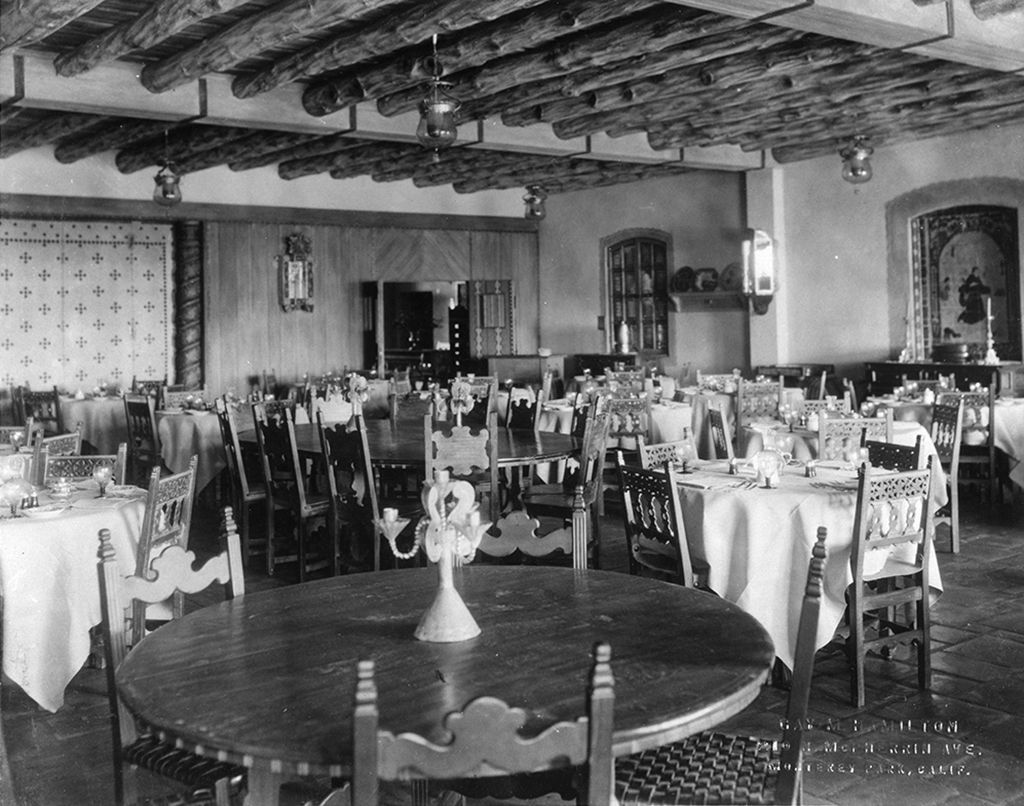

The History of La Posada
La Posada was conceived as the finest hotel in the Southwest, the crown jewel of the Fred Harvey Company's hospitality empire along the Santa Fe Railway. Designed by the famed Mary Jane Colter, she considered it her personal masterpiece, meticulously curating everything from the building's structure to the furniture and landscape. Opened in 1930, the hotel operated for just 27 years before closing. Its museum-quality contents were auctioned, its interior was gutted for offices, and it narrowly escaped demolition multiple times over the next 40 years.
Facing its final threat, the hotel was placed on the National Trust for Historic Preservation's endangered list, where it captured the attention of Allan Affeldt.
After three years of complex negotiations, Affeldt and his partners purchased the property in 1997 and began the monumental task of restoration. They have since transformed La Posada from a ruin into a vibrant "living museum" that showcases history, architecture, and the art of Allan's wife, renowned painter Tina Mion.
At the heart of the hotel's magic is the fictional history Colter created for it: the grand hacienda of a wealthy Spanish family, the Pájaros, who lived on the site for generations before selling their beloved home to the railway. This detailed fantasy guided every one of Colter's design choices, giving La Posada the authentic soul and timeless character of a place with a deep and storied past.
SELF-GUIDED TOUR
Discover the history and rehabilitation of La Posada Hotel Via this Self-Guided Tour!
The Fantasy: Mary Colter’s Vision
Mary Colter always began designing her buildings by creating a rich fantasy about their history. She envisioned La Posada as the grand hacienda of a wealthy Spanish landowner, whose family lived here for 120 years, occasionally expanding the hotel until it finally resembled the structure we see today. This fantasy guided every aspect of her architectural design.
In her created backstory, the estancia had been wrested from the wilderness before there were cattle, before the steam trains shattered the stillness of the high desert, by the great, great grandparents of Don Alphonso de los Pájaros, the last Don of the La Posada.
The first Don and Doña, Spanish Basques by way of Mexico, arrived in the early 1800s with a collection of books and exotic birds in elaborate, wrought iron follies. They set about building La Posada as an oasis in this strange land of dancing katsina spirits and Navajos on Spanish horses courtesy of Don’s Tovar and Onate generations before.
The oldest part of the home—the central two floors—rose like a dream adrift in a sea of wild sage. The second Don Pájaros grew the herd to 20,000 head, watering greedily from the headwaters of the Little Colorado all the way to Grand Falls, and added the east wing (now the dining room and railway offices) as the ranch quarters. Here the empire prospered: Furniture was made, ranch hands bunked down, and the huge ranch kitchens produced everything from tallow candles to hides for the market at Santa Fe and for trade to the Indians.
To relieve the isolation, the family traveled and collected. The third Don fell from his horse at the age of 43, leaving the Doña to reign, queen of the painted desert, for 30 years. It was she, finally too old to travel, who sold land to the Atlantic & Pacific on the condition that their shiny trains pass the front door of La Posada and bring the world to her, a parade of steel and steam, passengers marveling at the grand hacienda on their way to fortune in California.
The fourth Don Pájaros was a man of great culture born to fabulous wealth and a million-acre ranch. He added the west wing—33 guest rooms for his friends—and built gardens that were the envy of the Arizona Territory. By 1920, the hacienda looked as it does today—72,000 square feet of wonders from around the world.
But then came the market crash of 1929, wiping Don Alphonso out, including everything generations of the Pájaros family had built. La Posada, Don Alphonso’s family home for 120 years, had to be sold to the Santa Fe Railway.
It was the end of an era. La Posada would no longer pass from generation to generation of the Pájaros family, but he felt a sense of peace that this beautiful “resting place” would be shared with others. The Harveys had been contracted to run the hacienda as a new hotel, promising to maintain La Posada like a proud estate. The guest rooms would be rented. Travelers would dine beneath the Pájaros’ magnificent chandeliers, seated beside the Pájaros’ patron saints—planting, cooking, and building in their fragile and forgotten innocence.
In the early dawn of his last day in this place he loved, the childless Don Alphonso bade a quiet goodbye to his staff and beloved La Posada and walked out the door with nothing but the ebony cane of the first Don and two parrots perched happily on his shoulders. He whispered goodbye to the birds and old trees, to the art and the furniture, and to the memories collected by four generations of his fabled forebears quietly observing from every corner of the hacienda. “Keep watch for me,” he murmured.
Don Alphonso de los Pájaros was never seen again.
Every spring, though, a flock of turkey vultures arrives, Spanish Grandees in black satin, who watchfully circle until winter. Guests still claim to see the Don at twilight, quietly strolling the gardens in the magnificent Arizona sunset.
This detailed and moving story (albeit fictional) was the brilliance of Mary Colter’s design process. And we thank her for that.
FAMOUS GUESTS
What do all these movie stars and politicians have in common? They have all visited La Posada. During its heyday in the 1930s, the hotel was a favorite destination of the Hollywood.
- Albert Einstein
- Alice Faye
- Amelia Earhart
- Anne Morrow Lindbergh
- Betty Grable
- Bob Hope
- Carole Lombard
- Charles Lindbergh
- Clark Gable
- Diane Keaton
- Dorothy Lamour
- Douglas Fairbanks
- Ed Ruscha
- Franklin D. Roosevelt
- Gary Cooper
- Gene Autry
- Governor Jane Hull
- Governor Janet Napolitano
- Grant Withers
- “Hopalong” Cassidy
- Howard Hughes
- Hugh Downs
- James Cagney
- James Turrell
- Jane Russell
- Jimmy Doolittle
- Jimmy Stewart
- John Huston
- John Wayne
- Lauren Hutton
- Lionel Barrymore
- Mary Elizabeth Jane Colter
- Mary Pickford
- Pola Negri
- President Franklin Roosevelt
- President Harry Truman
- Representative Isabella Greenway
- Representative J.D. Hayworth
- Robert Young
- Roddy McDowell
- Sam Maloof
- Senator Barry Goldwater
- Senator John Kerry
- Shirley Temple
- The Crown Prince of Japan
- The Earl of Sutherland
- Tom Ford
- Victor Mature
- Wallace Berry
- Wiley Post
- Will Rogers
Gardens at La Posada Hotel
Mary Colter’s original 1930 design for La Posada included plans not only for the hotel building but also for 12 acres of gardens based on sustainable desert plant communities. Unfortunately, these plans were never implemented because the Santa Fe Railway faced major budgetary constraints in the years following the Great Depression. By the 1980s, La Posada’s gardens had fallen into total disrepair.
We started restoring La Posada in 1997 and the gardens have been under continuous improvement since then. The Sunken Garden has been restored, and the Rose and Potager Gardens are thriving on the north side. The Cottonwood Grove has been stabilized and new trees have been planted. The South Lawns are healthy and new walkways have been added. To the east, another five acres of gardens and a vineyard are planned to surround the Affeldt Mion Museum in the 1930 Depot and the Turquoise Room restaurant is scheduled to expand into the gardens with patio seating. Colter’s vision of an oasis in the desert has finally been realized. With careful management, La Posada’s gardens will continue to grow and mature for decades to come.
Arts & Exhibitions
At La Posada, art is an essential part of our identity. We proudly feature a dedicated gallery showcasing a diverse range of fine art from across the Southwest and beyond. Our rotating exhibitions are curated to feature both emerging and established artists, offering guests and visitors an inspiring cultural experience that honors our rich artistic heritage. From contemporary paintings to historical collections, our gallery serves as a vibrant space for discovery and appreciation, reflecting our deep commitment to the arts.


